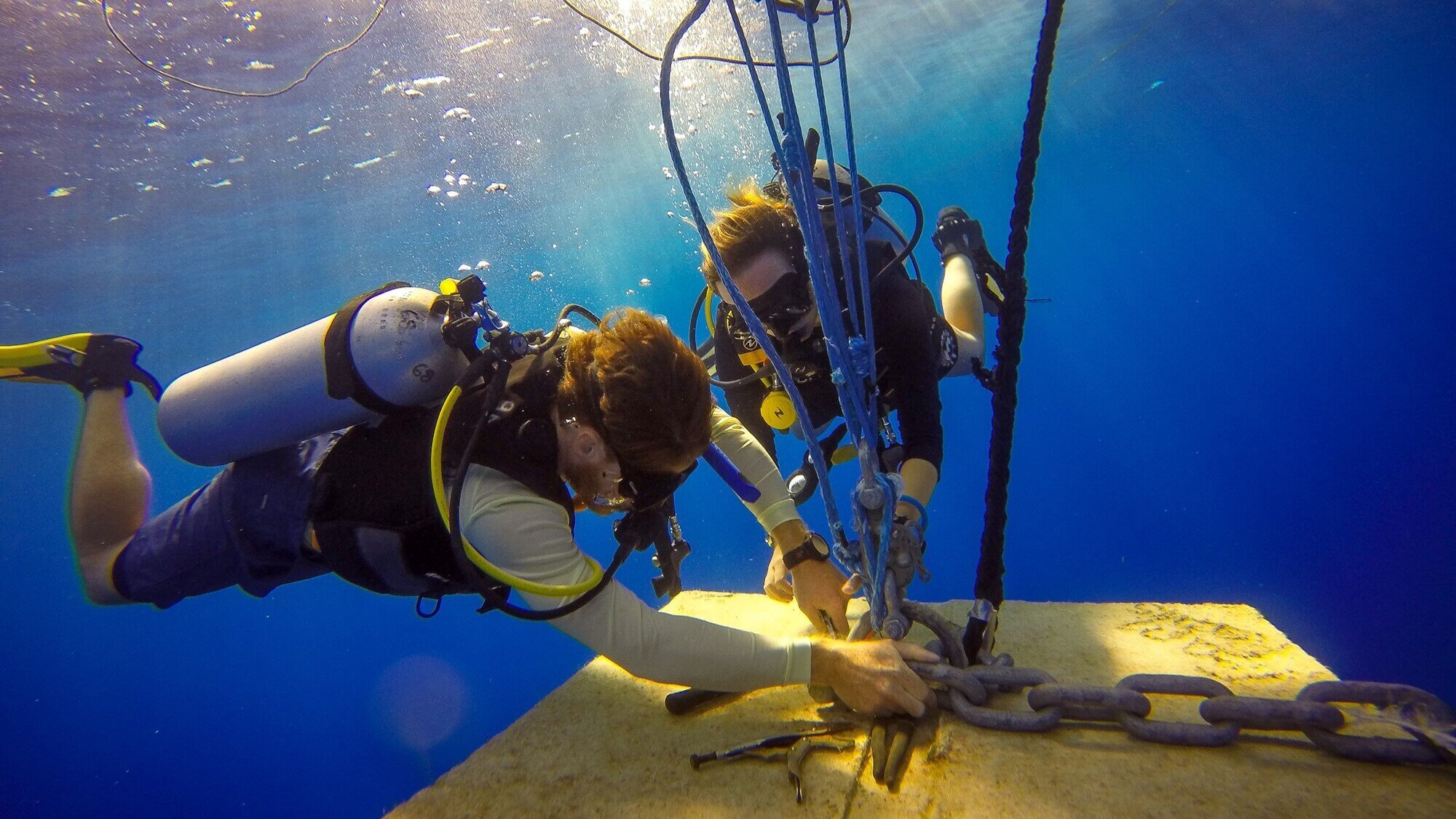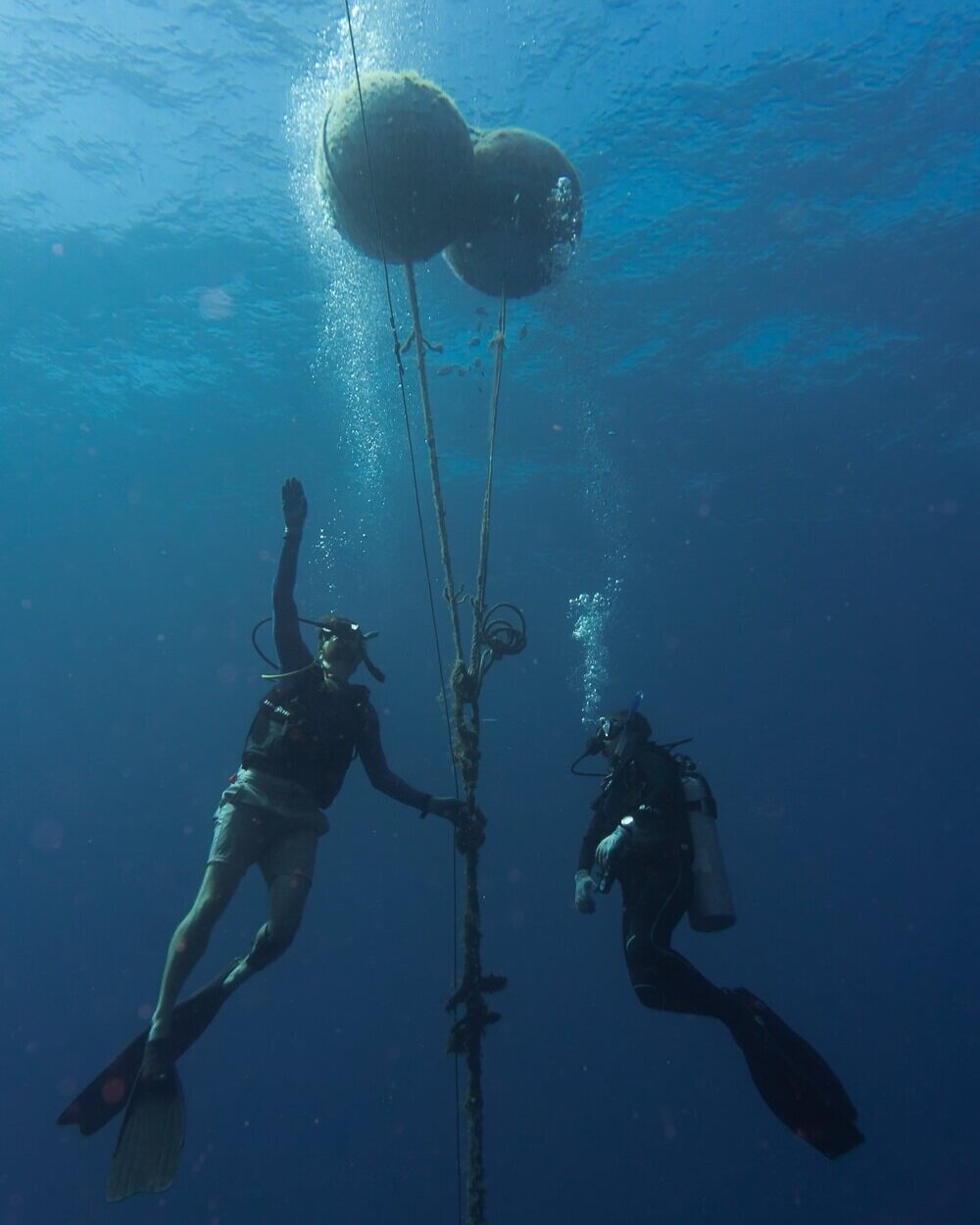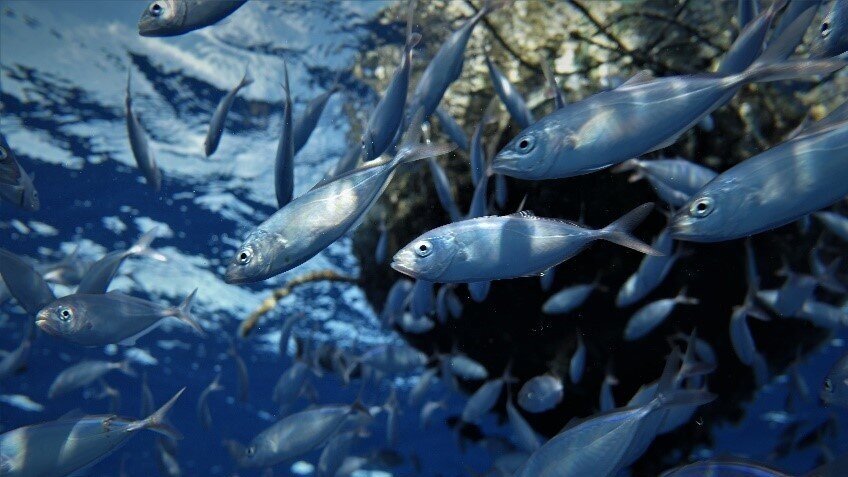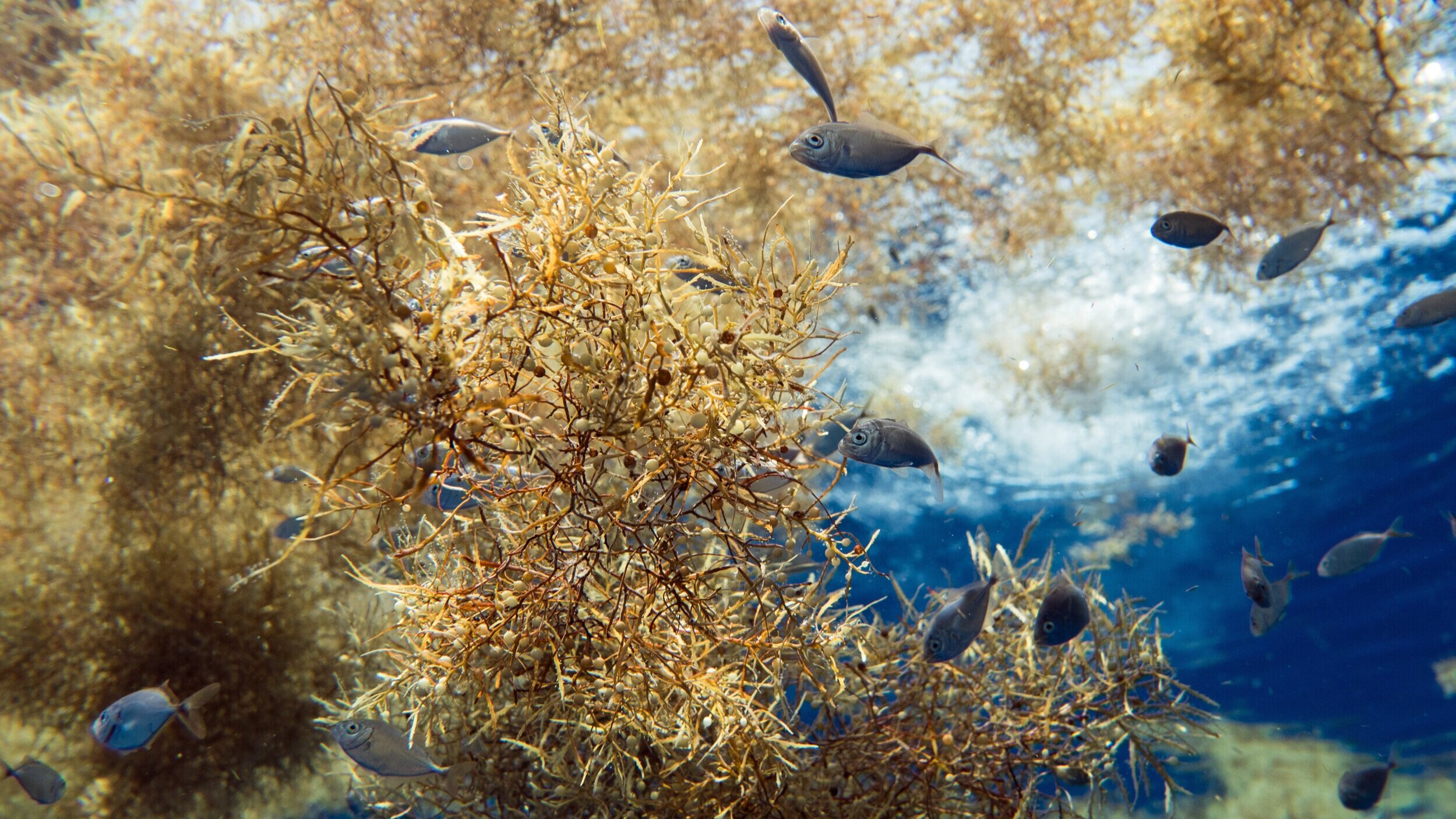Divers attach the mooring line to the FAD anchor block during the deployment of CEI’s research FADs.
Many different species of fish that live in the open ocean spend a lot of their time close to floating objects. Because structure in the open ocean is very uncommon, floating objects like logs, seaweed patches, or lost buoys provide a combination of benefits to fish in this habitat. Floating debris can act as shelter for small fish, which then in turn can attract large fish hoping to feed. It can act as a meeting point for fish to reform schools that have been separated, or also as a navigational aid. And because many large sportfish are among those attracted, fishing fleets have used intentionally-deployed floating objects to increase their catch efficiency.
Divers attaching equipment for a fish tracking project that is nearing completion.
These are called fish aggregation devices, or FADs. They facilitate the capture of over half of all the tuna caught on the planet annually, and are the backbone of many small-scale food and sport fisheries. In 2017, a CEI team led by Eric Schneider designed and deployed several FADs anchored in the deep water of the Exuma Sound to study the effects that FADs have on the habitats in which they are used, and on the fish around them.
Small fish surround an abandoned FAD found floating offshore from CEI.
Last week, the first published paper was released from this ongoing FAD research program. The paper explains the unique design of CEI’s FADs, which use a buoyant structure that rests beneath the surface to avoid damage and unwanted fishing activity, and explains the conservation research that can be performed on these types of FADs. The paper also sets the stage for a number of interesting biology and ecology-related projects that have been conducted. Read the article here and stay tuned for more soon!
Sargassum seaweed can live its entire life cycle floating in the open ocean, and is home to many small fish and invertebrates, acting as a natural FAD.
By Eric Schneider
Research Scientist




